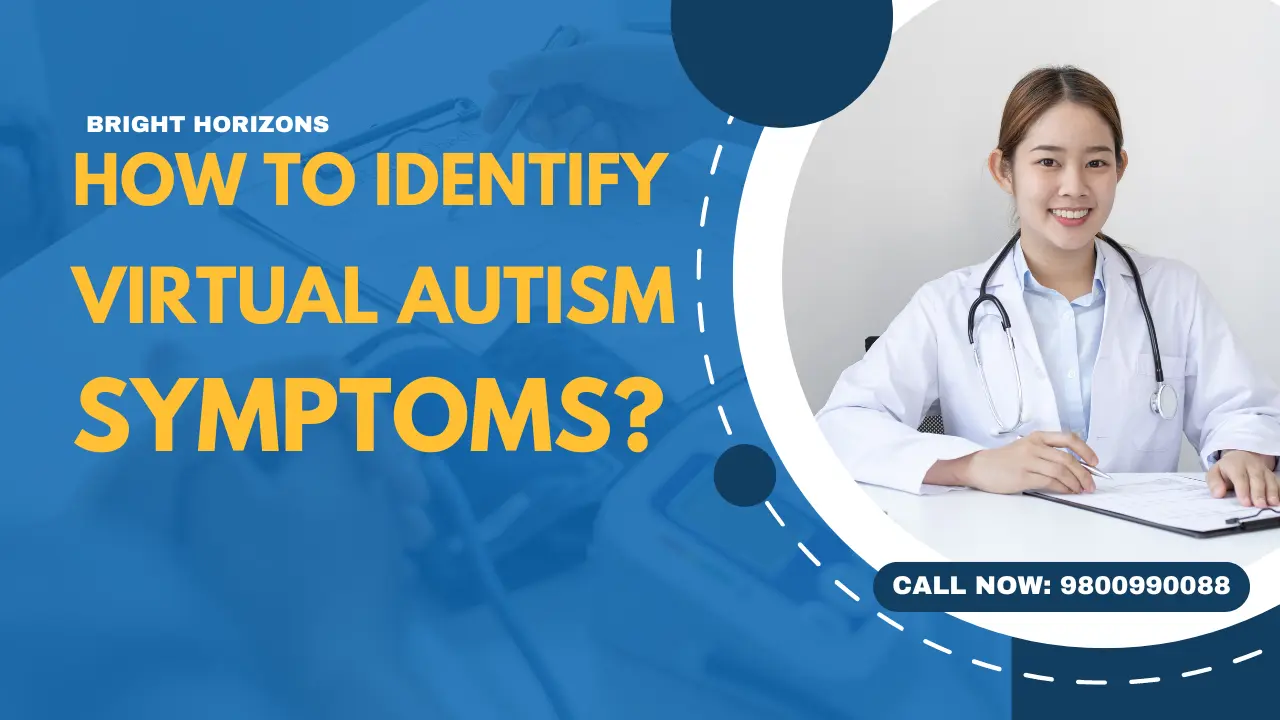Virtual autism is a type of autism spectrum disorder, that is linked to children who spend excessive time on electronic screens like Mobile, TV, Computer etc. This condition involves challenges with social and communication skills that happen because of prolonged screen exposure and virtual interactions. In today’s blog post, we’ll discuss virtual autism, its symptoms, recovery time, and recovery signs. Let’s get started:
Does Your Child Have Virtual Autism?
Also known as screen-based autism, virtual autism has the negative impact of excessive use of electronic devices and online platforms on children. Overexposure can result in social isolation, behavioural issues, and stopped emotional development.
The rise in virtual autism is related to the increased popularity of video games and social media among children. The easy access and engaging nature of these digital environments contribute to increased screen time, potentially impairing social and communication abilities.
You can call us or WhatsApp for More Details @ our Customer Care Number +91-9800-9900-88
Virtual Autism Symptoms
The following are the most common symptoms of virtual autism and if you notice these symptoms in your child, then you can reach Bright Horizons where we have experienced therapists that can help your child.
Children with virtual autism often struggle with:
- interpreting non-verbal social cues
- maintaining eye contact
- using appropriate facial expressions, and
- participating in reciprocal conversations.
These social interaction difficulties can stop the formation and maintenance of relationships. Additionally, excessive screen time can lead to behavioural issues such as aggression, irritability, and impulsivity, along with common sleep disturbances.
Reach Bright Horizons to Get Virtual Autism Treatment for Your Child
If parents observe behavioural changes or emotional issues in their child due to excessive screen time, seeking help from therapists at bright horizon jalandhar may be beneficial. These professionals can offer tailored guidance and support, addressing underlying challenges and developing strategies to manage virtual autism effectively.
Targeted therapy methods are used to manage the unique challenges experienced by children with virtual autism. These methods include behavioural therapies, speech and language therapy, social skills training, and cognitive behavioural therapy. Therapists work closely with children with virtual autism to create personalized strategies and techniques aimed at improving their social interactions and communication skills.
Virtual Autism Recovery Time
The recovery period for virtual autism varies based on the severity of symptoms, the child’s response to interventions, and the consistency of following recommended strategies. Consulting experienced therapists at Bright Horizons can provide clearer insights into the expected recovery timeline.
Virtual Autism Recovery Signs
Recognizing signs of recovery from virtual autism involves observing improvements in social, communication, and behavioural aspects. Here are some signs that a child may be recovering from virtual autism:
- Enhanced social interactions
- Improved communication skills
- Behavioural improvements
- Better management of emotions
- Improved sleep quality
- Reduced time on digital devices
Parents can observe these changes and improvements in their child after getting proper treatment for their child with virtual autism.
Conclusion
Virtual autism is a major concern in the digital age. Recognizing the symptoms early and implementing targeted therapy approaches, such as behavioural therapies, and speech and language therapy, can significantly help in recovery. You can contact Bright Horizons if your child is experiencing virtual autism.
You can call us or WhatsApp for More Details @ our Customer Care Number +91-9800-9900-88
Other Useful Link:

